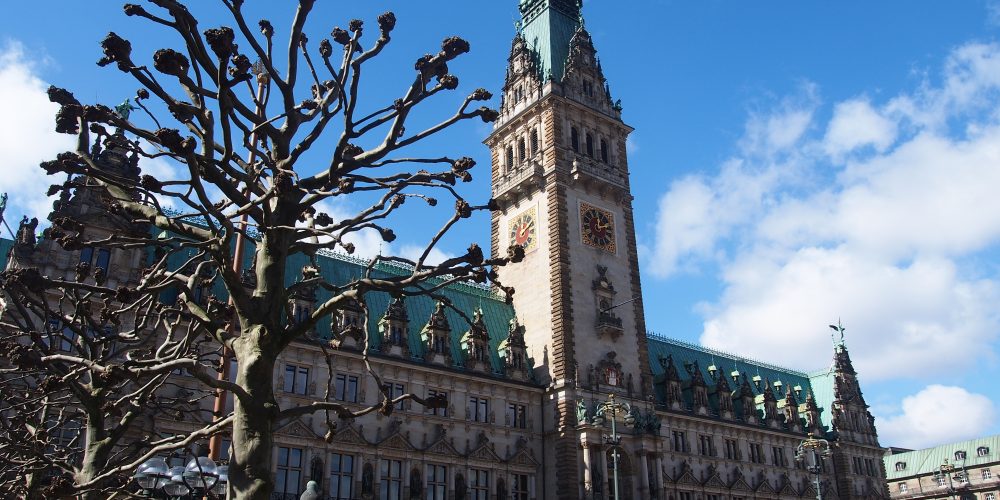On Wednesday, 4th March 2015, I was allowed to receive a group consisting of American university professors and students. After their six hours journey from Amsterdam I considered it adequate to walk a bit first in order to get everyone going again. So directly after their arrival we started our tour through the city centre: Ballindamm, Jungfernstieg and Mönckebergstraße.
 During those 90 minutes we had fun taking photos in front of the Inner Alster Lake, the beautiful Town Hall dating back to the 19th century and the shopping malls, which also served as a stop for restrooms. We discovered the headquarter of HAPAG LLOYD, one of the world’s biggest shipping companies but also the geese on the Alster, which had just come out of their winter shelter a few days before. After “inspecting” Hamburg’s majestic town hall, we strolled through the most important shopping street of Hamburg, the Mönckebergstraße.
During those 90 minutes we had fun taking photos in front of the Inner Alster Lake, the beautiful Town Hall dating back to the 19th century and the shopping malls, which also served as a stop for restrooms. We discovered the headquarter of HAPAG LLOYD, one of the world’s biggest shipping companies but also the geese on the Alster, which had just come out of their winter shelter a few days before. After “inspecting” Hamburg’s majestic town hall, we strolled through the most important shopping street of Hamburg, the Mönckebergstraße.
And while were walking back to our bus, we tasted the delicious specialty “Franzbrötchen” – endemic to the north of Germany, if not only to Hamburg and decided “not to eat a normal croissant ever again”.
Back on the bus, we started to have a look on the sights, which are not situated in walking distance: the embassy district west of the Outer Alster Lake, the Imam Ali Mosque, which is the biggest Islamic centre of Germany, the Hotel Atlantic, where James Bond jumped off with his BMW in “Tomorrow never dies”, the public park “Planten un Blomen” (Plants and Flowers), made of the former town walls, the new composer’s district with reconstructed half-timbered houses, Hamburg’s symbol: St. Michael’s Church, the first Protestant Church built as such on Hamburg’s ground in the 17th century.
 We stopped here for 15 minutes in order to examine the interior a bit closer. After having visited this sacred site we continued our tour to the “Sinful Mile”, the Reeperbahn, where we met the Beatles on Beatles’ Square. Through the heart of our red-light district, the “Große Freiheit” – Great Liberty – we continued our way down to the pulse of Hamburg’s economy – the harbour.
We stopped here for 15 minutes in order to examine the interior a bit closer. After having visited this sacred site we continued our tour to the “Sinful Mile”, the Reeperbahn, where we met the Beatles on Beatles’ Square. Through the heart of our red-light district, the “Große Freiheit” – Great Liberty – we continued our way down to the pulse of Hamburg’s economy – the harbour.
With a look at the fish market auction’s hall and the docklands of the harbour ferries, as well as the Old Elbe Tunnel, inaugurated in 1912, we passed Hamburg’s two museum ships, the Cap San Diego and the Rickmer Rickmers in order to have a look on the biggest warehouse complex constructed on poles of the world, the Speicherstadt! Directly next to this UNESCO World Cultural Heritage Candidate we explored the newly-built quarter HafenCity.
Dominated by modern “sustainable” architecture this quarter is supposed to accommodate up to 12,000 people, when the last stone will have been laid around 2025. With a last view on the Speicherstadt we finished our tour where we had started: on Glockengießerwall.

